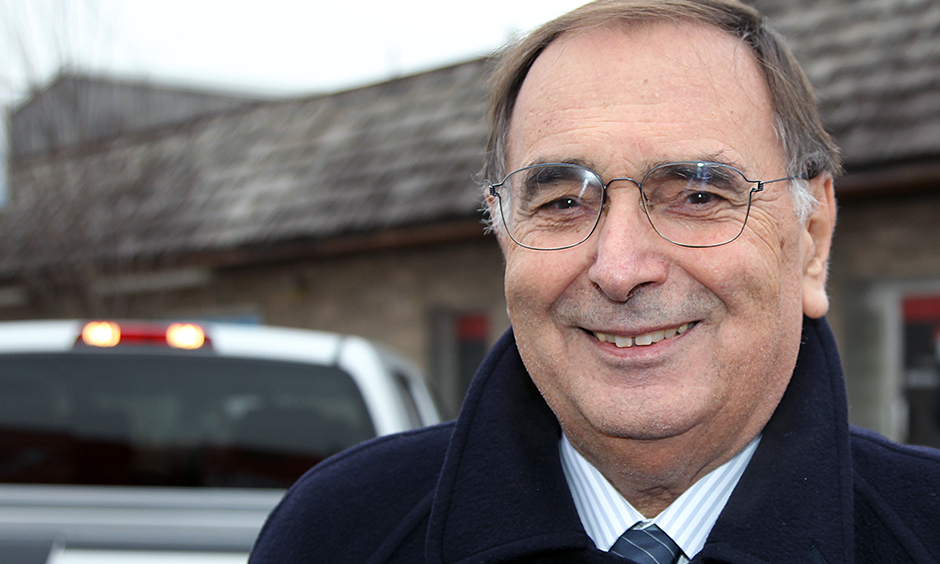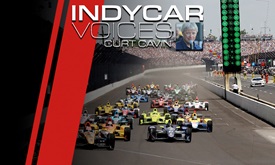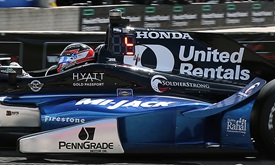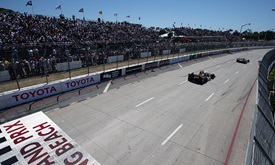INDYCAR celebrates long partnership with chassis supplier Dallara
NOV 20, 2016
(This story originally appeared as exclusive content on the Verizon INDYCAR Mobile App.)
Giampaolo Dallara celebrated his 80th birthday on Nov. 16, and the man who helped redefine motorsports engineering has enjoyed a special relationship with INDYCAR.
Dallara has been involved with the series since 1996 as the company began production of an Indy car chassis that debuted in the 1997 Verizon IndyCar Series. The other manufacturers then were G Force and Riley & Scott. When those companies left the series, Dallara remained.
That makes Dallara one of the longest-running continuous partners of INDYCAR and there is a reason for its long-term loyalty. It all goes back to the company's founder, Giampaolo Dallara (pictured above).
“I can easily call him a motorsports legend,” said Stefano dePonti, the CEO and general manager of Dallara. “He did a lot for the automotive industry engineering-wise, starting with the major automotive companies in Europe, then realizing his dreams of expanding into the United States.
“He is a very skilled engineer and a tough businessman. He loves racing and motorsports. He has a special part of his heart for United States motorsports. He has a particular affection to racing in the U.S. He is an engineer that never gives up. He has turned 80 years old but still has a big strategy for the company and still very much involved.
“He is the most passionate man I have ever met in my career.”
When Dallara joined the series in 1996, it was a well-known company in Europe but little was known about it in the United States. That was about to dramatically change as it placed a bid to build chassis for what was then an all-oval racing series.
Success came slowly in the new series.
“The first year, we barely sold one or two cars,” dePonti said. “Dallara came to the United States and did not know anybody or anything. We did it in a very humble way and tried to learn the oval environment and that required a different engineering approach. With enough experience, eventually we stayed up there by ourselves and the other manufacturers decided to do something else.
“At one point, they came out with another bid in 2003 with a U.S. manufacturer called Falcon but that never happened. The market was between G Force and us. And then G Force only had a couple of teams and decided to go to Champ Car in 2004 and we stayed by ourselves. Then we had the merger with the Champ Car series when Champ Car did not survive and we had to take care of all the Champ Car teams that came over to INDYCAR.
“Finally, when we did our bid for the 2012 cars (the current IR-12 chassis), we won and we decided to start an operation in Indianapolis in Speedway with a factory and everything.”
The INDYCAR program represents a vital part of Dallara's worldwide model. Motorsports
represents 50 percent of the company's business. It is also involved in Formula One with Haas F1 as an engineering consultant. It is also involved in ladder series including GP1 and GP2. Worldwide, the company has Formula 3, Formula E and builds cars for other national series such as Super Formula in Japan.
In North America, Dallara builds the chassis for the Verizon IndyCar Series, Indy Lights presented by Cooper Tires and the LMP2 cars for the IMSA Series. On any given weekend during the racing season, there are 350 Dallara cars competing around the world.
It's pinnacle program remains the Verizon IndyCar Series.
“It is extremely important for Dallara,” dePonti said. “We can't survive our business in the United States without INDYCAR. That is the reason we had the opportunity to build the new cars and open a factory in Speedway, Ind. Progressively we will move all the production for INDYCAR and Indy Lights to the United States. We already have a big portion of it and we prove every day how busy we are in our factory. We are also adding the other U.S. program, IMSA LMP2.”
Mr. Dallara's career began after he was graduated from University of Milano with a degree in aeronautical engineering. Then he started working for Maserati, Ferrari and Lamborghini.
In 1972 he opened his own company. He started the industrialization of what is called the “Motorsport Valley.” It's the same region that also has Lamborghini, Ferrari, Maserati, Ducati and Dallara facilities, putting thousands of Italians to work in motorsports and engineering.
“There are a lot of other industries that are part of this engineering technological network,” dePonti said. “We are trying to repeat the same thing with our company in Speedway, Ind.”
There are many reasons why Mr. Dallara has become so successful in racing, but there is one that dePonti emphasizes the most.
“It's the fact that everything is reinvested in the company,” dePonti said. “He is a competitor. He loves to win. He gets up in the morning at 3 a.m. to watch the Daytona 500 in NASCAR or the INDYCAR race when it is on TV. It doesn't matter what series, he watches it. He is into competition. He has this competition in his blood. He wants to win. From a business point of view, he reinvests all of the company's profits so every five years we have something new in the company that represents innovation and technology. The factory in Indianapolis was one of them.
“Now, we are ready to announce the big composite carbon fiber center in Italy called DART – the Dallara Research Center. Back in the days we had the simulators and then the wind tunnel. We reinvest all of the profits the company makes in new equipment and technology and devices in order to be competitive.”
And Dallara has no bigger supporter than INDYCAR.
“Dallara is rich in INDYCAR's history and a wonderful partner to work beside,” said Alivia Mattioli, INDYCAR’s coordinator of partner strategies. “Mr. Dallara has written many stories over his life that have propelled his business to new levels. With his passion for racing, technology, innovation and his curiosity to learn more, there is no telling what he can accomplish in his next chapter.”



















